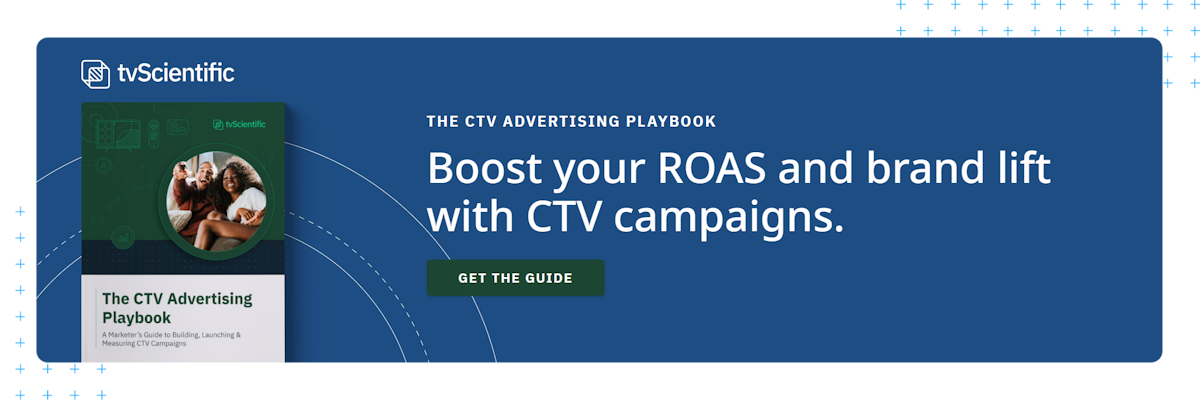These seven demand generation examples will help spark your creativity and guide your strategy to bring in more, higher-quality leads. Read to learn more.
With strategies ranging from content marketing to referral programs, these demand generation campaign examples show a path to success
In the jungle of business-to-business (B2B) marketing frameworks, demand generation is the king, and all other contemporary strategies work beneath its purview. There are myriad ways to implement demand generation, and many target different stages of the demand generation funnel. But learning about these strategies in the abstract can only take you and your marketing team so far. The question quickly becomes: How can we turn these theories and tactics into a fully formed demand gen funnel of our own? And what does it look like when these methods work?
We’re here today to answer these questions with demand generation examples your business can learn from. By following these demand generation marketing examples, you’ll begin to find strategies that work best for your business. From there, you can double down on the highest efficiency efforts and pull in more high-quality, marketing qualified leads (MQLs).
Discover strategies, metrics, examples and more with The Complete Guide to Demand Generation.
Demand Generation Examples
Content Marketing: HubSpot
Today’s marketing landscape requires very different thinking from that of just a few short years ago. The proliferation of online resources has empowered buyers to spend around 45% of their time performing independent research before ever reaching out to a sales team. How do they do that research? By reading and watching content online. In fact, a large proportion of buyers consume 3-5 pieces of content before engaging with a salesperson.
This presents an opportunity for marketers. If we produce high-quality, genuinely helpful top-of-funnel content, it will inevitably lead to high quality leads making their way downfunnel.
That’s exactly what inbound marketing and sales platform HubSpot did. It created a vast library of free materials including blog posts, ebooks, white papers, templates, checklists, videos, and even certification courses. These materials cover inbound marketing, sales enablement, and plenty of other related topics that potential customers of its services might find useful.
By making these materials available and accessible, HubSpot scoops up buyers in the early stages of research and makes them aware of its brand and services. It answers their questions, demonstrates knowledge and authority in the industry, and builds trust and recognition. Its readers may not be ready to buy yet, but when they are, HubSpot’s name will be the first that comes to mind.
To make this strategy work for you, consider what your potential clients want to know about your field. What are common questions they need answered? What topics in your field seem obvious to an expert, but demand a little more explanation for an outsider? Consider answering these questions on a company blog. Using Google keyword research can help you identify and target the right questions, and creating high-quality content will improve your chances of reaching the audience you want to reach.
Webinars: NP Digital
Webinars are a great way for prospects to learn more about your business and how it might solve their specific problem. As many as 53% of marketers say webinars are the top-of-funnel format that generates the most high-quality leads. That makes sense, as 91% of webinar attendees say their next step is to visit a relevant website for more info. If your webinar is good, that website will likely be yours. That helps lower the cost-per-lead for 80% of marketers.
Digital marketing agency NP Digital leans into webinars with a full series on digital marketing. The series features authoritative, expert-led presentations covering recent trends and methods in digital marketing. It also includes a variety of free tools and resources for attendees, keeps the materials accessible to all types of marketers — AKA its target audience — and includes practical suggestions for implementing the tools and strategies discussed. NP Digital feeds their potential customers’ desire for knowledge by making all this available.
Webinars work because they appeal to highly motivated prospects. These are potential customers who are so interested in getting deep on a topic that they’ll happily hand over info such as their name and email address to register for the event. By gating webinars behind requests for information, you’ll learn more about your audience and create a direct line of communication that lets you continue to nurture the relationship with tailored and targeted content. Speaking of…
Personalized Experiences: Nuxeo
Say you’ve got potential customers visiting your website and consuming your library of useful content regularly. That’s a great start! But you may notice an unusually high number of those visitors bouncing off your site after engaging with just one piece of content. Some churn is normal. After all, not every site visitor is a good fit for your business, and even those that are a potential good match may leave once they get what they came for. But what if they knew they could answer their next question elsewhere on your site — or that your site could answer questions they didn’t even know they had?
Enterprise content management platform Nuxeo addressed this very question by incorporating personalized content recommendations on its site. By examining the on-site behavior of visitors, Nuxeo was able to identify other content that might appeal to each visitor and serve it to them via personalized CTAs. By serving the right content to the right people at the right time, Nuxeo saw a 175% increase in views on its instructional video content and a 25% increase in goal conversion overall.
Prospects in the research phase of buying have a lot of questions, and they’ll uncover more in the course of their research. By serving them personalized recommendations, you can ensure they stay within your ecosystem as much as possible. This serves as an amplifier on your content marketing efforts, accelerating the pace at which prospects come to trust and rely on your brand even before a purchase. And recommendations need not stay locked to your website. Once you have a prospect’s email address, you can send them automatic emails with other content they’re likely to find useful. This nurture content can usher prospects through the middle of the funnel and closer to a sale.
Social Media Campaigns: IBM
Just like everyone else in the modern era, B2B buyers use social media. And not just for socializing or industry news; 75% of B2B buyers use social media in their buying decisions. This presents an opportunity to leverage social media in your demand generation strategy, and successful demand generation campaign examples in social media abound.
Take IBM. The multinational technology giant uses its Instagram account to share photos and videos of products it’s created over the last hundred years. Each of these posts demonstrates the company’s long and storied history of creating cutting-edge, valuable, and high-quality products. These products are often tied to distinct or noteworthy projects IBM has worked on, such as the computers and software it made for NASA during the Space Race in the 1960s or its partnership with Wimbledon on broadcast tools. These posts build knowledge about the depth and breadth of IBM’s offerings, increasing brand awareness and generating demand. To date, IBM’s account has accrued 588,000 followers.
For IBM, social media presents a chance to demonstrate its long history of success. If your business hasn’t been around for over a century, worry not. You can also use social media to share case studies, promote informational content you’ve created, and offer support to customers in need. These platforms provide a chance for your brand to appear more personable and authentic while continuing to get prospects the information they need to move down the demand generation funnel.
As you work out your social media strategy, you may also want to consider complementing it with connected TV (CTV). CTV combines the precise targeting and performance pricing of social media with the reach of traditional TV advertising. That makes it easy for you to put the right content in front of the right audience every time. To learn more, read our free guide on how CTV advertising can fuel growth.
Influencer Marketing: Landis+Gyr
Influencer marketing has become incredibly popular for B2C marketers, but there’s no reason B2B marketers can’t take advantage of it, too. Perhaps the most important aspect of an influencer campaign is the feeling of authenticity they generate. An influencer’s followers will only buy into whatever they’re marketing if they believe the influencer also believes in the product. When it comes to B2B products, there aren’t many influencers on the scale of, say, Charli D’Amelio. Instead, B2B marketers can turn to micro-influencers — that is, influencers with smaller reaches but equally dedicated followings.
Global energy management solutions provider Landis+Gyr took a novel tack to influencer marketing when it decided to leverage employee advocacy into a kind of micro-influencer training program. The company selected a pilot group of employees from across the business to serve as Social Media Champions on platforms they already used. They then helped these employees find and share content that promoted company values. The program earned 1,800 content shares, 1,500 engagements, and an estimated earned media value of over $10,000 through authentic influencer content. The Corporate Social Media Awards shortlisted the pilot for the “Most Innovative Use of Social Media” award, and Landis+Gyr went on to expand the program beyond its pilot phase.
The key to Landis+Gyr’s efforts — and to social media marketing in general — is authenticity. Social media users expect to see normal people sharing their honest opinions on social media. This tacit mutual understanding is precisely why micro-influencers can be so effective. Prospects simply see them as social proof that your brand does well what it sets out to do. That’s why employee advocacy works so well, and can provide your business with such value. Business leaders can also function as influencers when tapped to lead seminars, write guest blogs, and otherwise contribute to your content creation strategy.
Email Marketing: Gallup
Email marketing is the alpha and the omega of digital marketing. Despite its age, it continues to carry significant weight among marketers, and for good reason. One 2021 survey found that 64% of B2B marketers described it as an effective way to meet business goals. That’s because it’s an extremely effective way to bring marketing qualified leads back into your ecosystem, nurturing them with more and better-targeted materials. Different emails can be sent to different prospects based on the buyer personas they most closely resemble, where they are in their customer journeys, the actions they’ve most recently performed on your site, and other telling variables.
For example, take the analytics and advisory company Gallup. When you request a report from its site, it already knows you’re interested in that topic and are likely in the midst of active research on related topics. Equipped with that knowledge, Gallup can send you an email that has not just the download link for the report you asked for, but also links to other relevant resources. This lets it cater to each prospect with individualized recommendations, nurturing the lead and ushering it down the demand generation funnel.
Referral Programs: Google Workspace
The best salesperson is the one you already know. A recommendation from a friend will almost always mean more than a pitch from a sales team. Luckily, marketers can harness that truth using referral programs that reward current customers for bringing in new ones.
When Google introduced the suite of productivity tools now known as Google Workspace, it also launched a referral program. Referrers receive payments based on the number of accounts they bring in, with bigger accounts bringing in more users at a higher rate or payment. The system is a win-win-win: Google gets more users, its current customers get cash kickbacks, and the customers they bring in save 10% on their first year of Google Workspace.
When designing your own referral program, consider how your customers might prefer to be rewarded. Cash payments, discounts on further services, or something else entirely could be a better incentive. Similarly, match the bonuses for referred customers to your business and services.
Targeting Demand Generation Efforts with tvScientific
The secret behind each of these demand generation examples is that none of them relies on just one demand generation strategy. Using a diverse array of tools empowers your business to find the channels that are most efficient at finding your target audience, serving them the right marketing materials, and bringing you back reliable data to refine your strategy. tvScientific’s sophisticated CTV advertising platform does just that, putting you in control of precise targeting levers and real-time performance feedback. Get in touch today to learn more.







